10 Ways to Teach and Include All Students This Year
July 25, 2024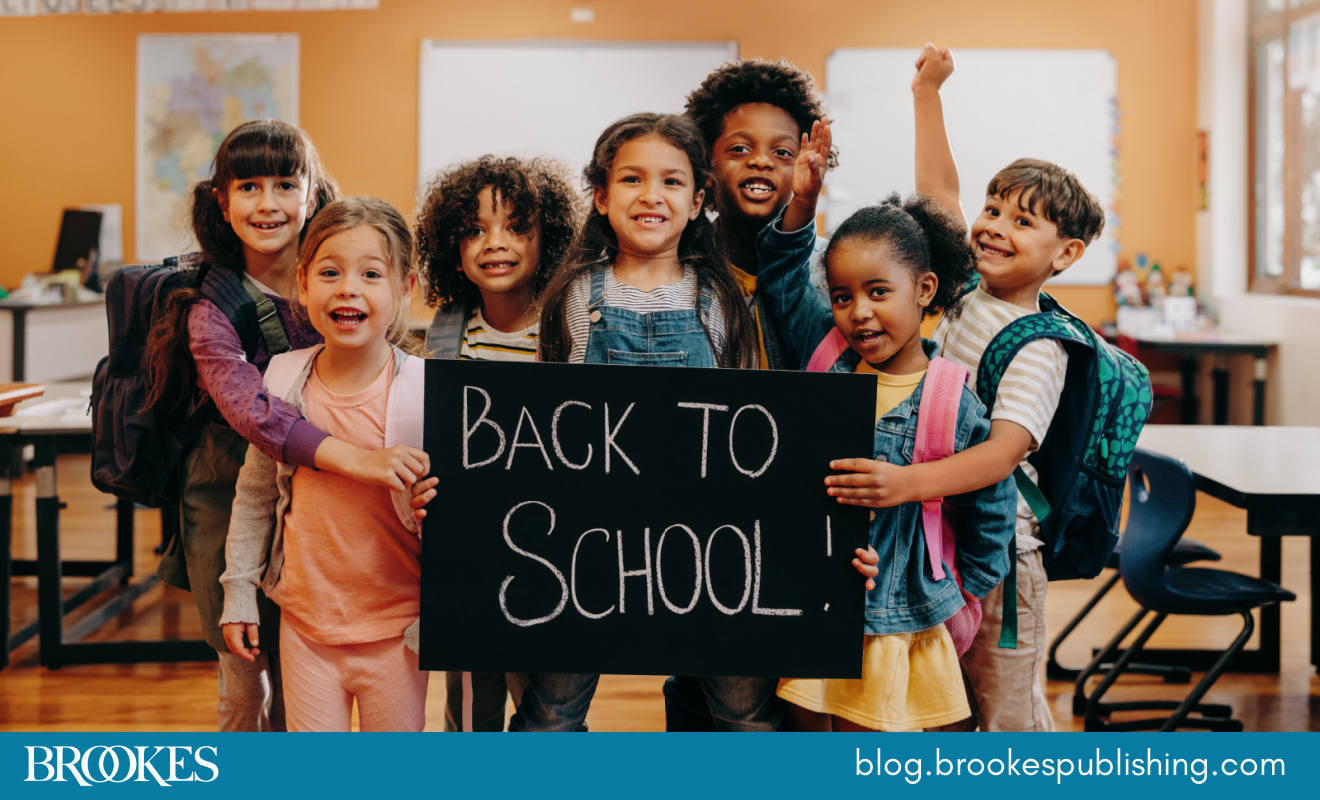
As you plan for your new school year, what are some ways to meet the learning needs of all students and ensure that your classroom is a place of kindness, connection, equity, and belonging? Today’s post brings you 10 important things inclusive educators should focus on, with links to practical blog posts to guide you this year.
We wish you a wonderful year with your new students! If there are specific topics we can cover on the blog to help support you, please let us know in the comments.
Nurture a culture of friendship.
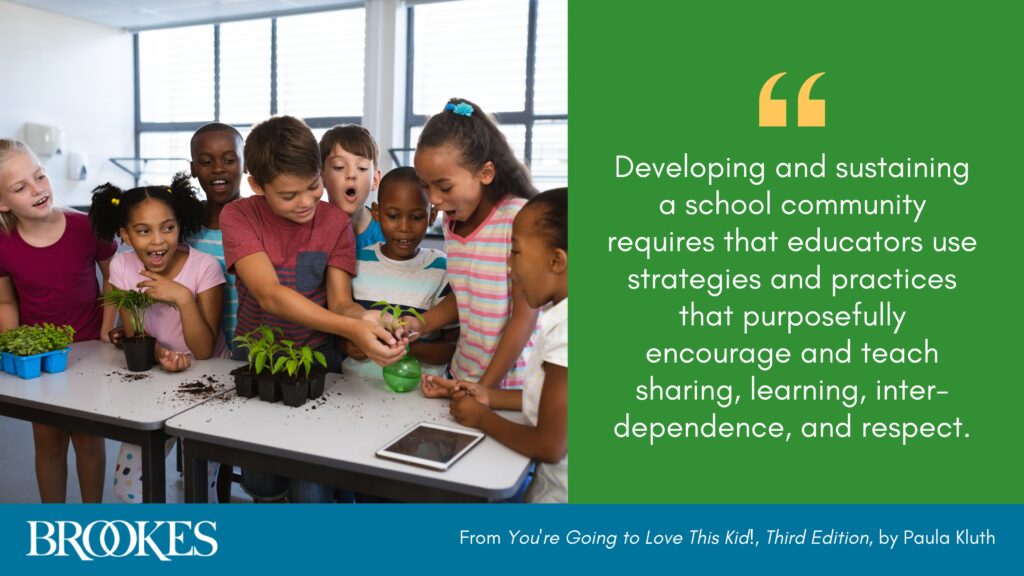 Read this post for 10 fun ways to encourage positive peer relationships in your classroom. And seek out advice from the experts: the third edition of Paula Kluth’s beloved inclusion guide, You’re Going to Love This Kid!, has a full chapter of practical guidance on friendships, social relationships, and belonging.
Read this post for 10 fun ways to encourage positive peer relationships in your classroom. And seek out advice from the experts: the third edition of Paula Kluth’s beloved inclusion guide, You’re Going to Love This Kid!, has a full chapter of practical guidance on friendships, social relationships, and belonging.
Look for new ways to engage diverse families.
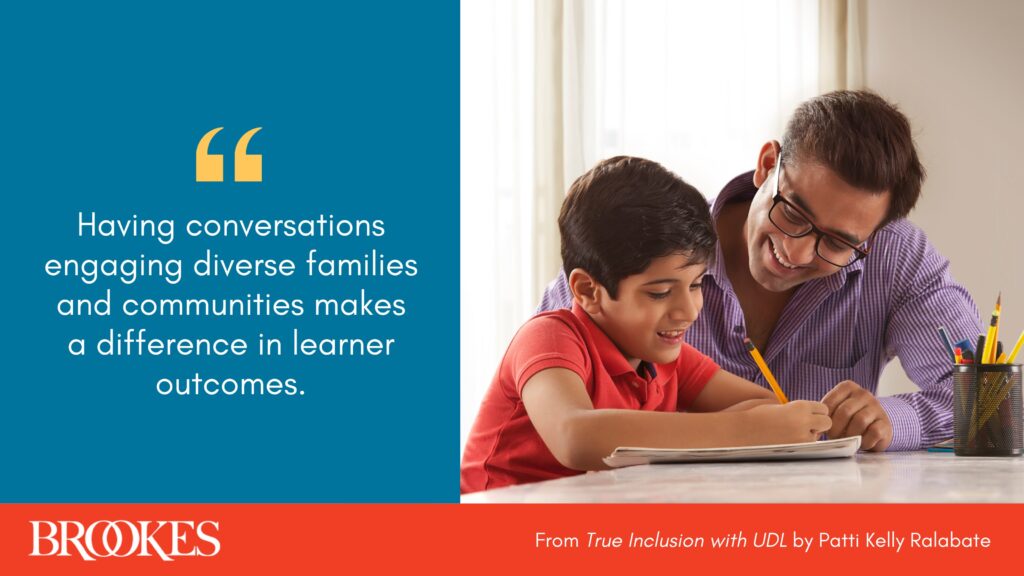 This quote from Patti Kelly Ralabate’s new book True Inclusion with UDL is a great reminder of how important it is to engage with culturally and linguistically diverse families, make them feel welcome, and involve them in their child’s education. Read this blog post for tips on successful partnerships with parents, including diverse families. (Home visits are one option, if your students’ families are receptive to them. This post gives you some practical guidance on conducting home visits with diverse families.)
This quote from Patti Kelly Ralabate’s new book True Inclusion with UDL is a great reminder of how important it is to engage with culturally and linguistically diverse families, make them feel welcome, and involve them in their child’s education. Read this blog post for tips on successful partnerships with parents, including diverse families. (Home visits are one option, if your students’ families are receptive to them. This post gives you some practical guidance on conducting home visits with diverse families.)
Talk to your students regularly about their needs.
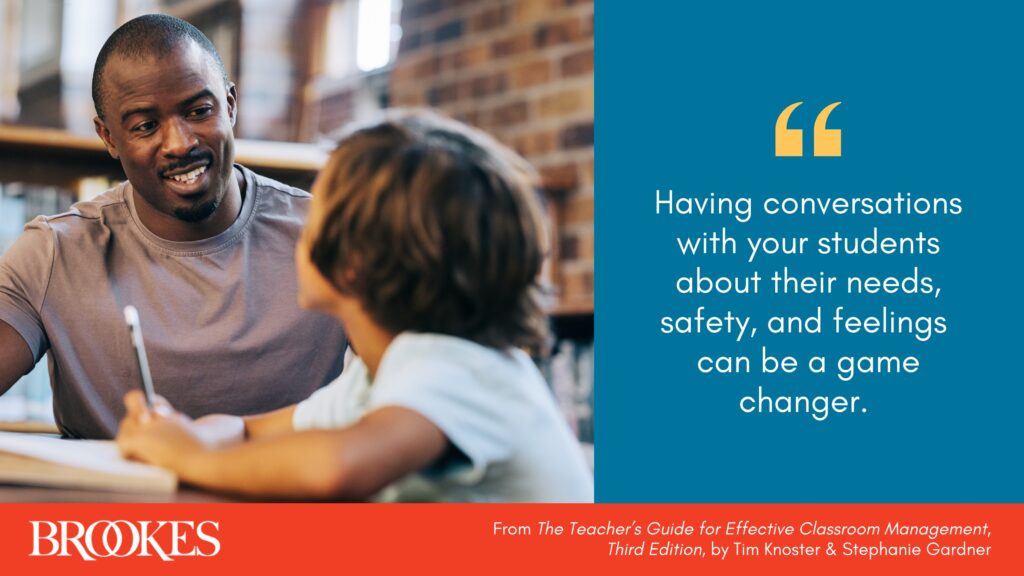 Letting your students know you care about their needs and feelings is a major part of ensuring their well-being and getting them ready to learn. See this blog post for 8 Tips on Building Rapport with Students this year, adapted from the new third edition of The Teacher’s Guide for Effective Classroom Management.
Letting your students know you care about their needs and feelings is a major part of ensuring their well-being and getting them ready to learn. See this blog post for 8 Tips on Building Rapport with Students this year, adapted from the new third edition of The Teacher’s Guide for Effective Classroom Management.
Support your students’ self-advocacy skills.
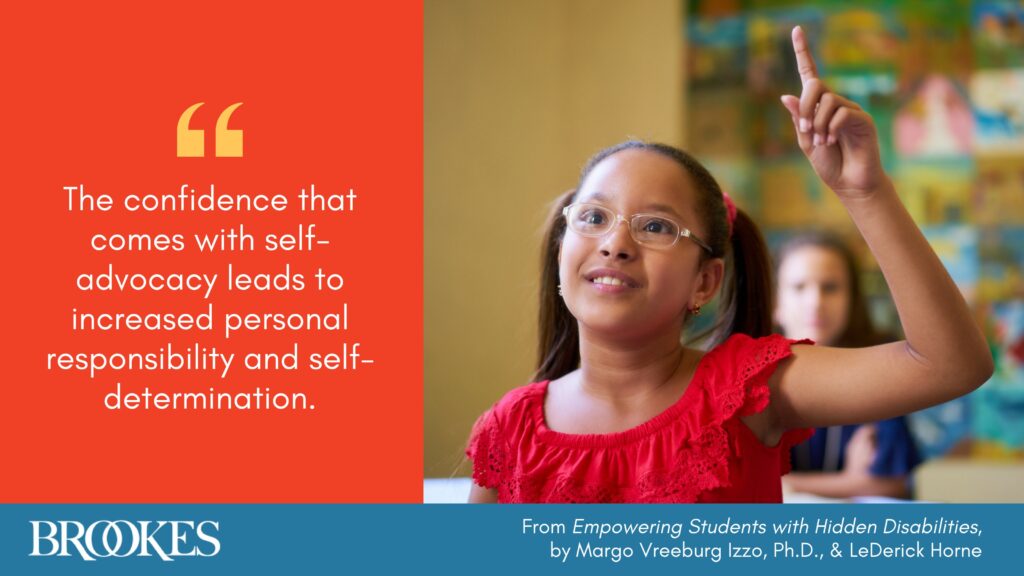 As this quote from Empowering Students with Hidden Disabilities reminds us, your students with disabilities will need to hone their self-advocacy skills to access the supports they need to succeed in the future. Read this blog post for 5 Steps to Strong Self-Advocacy Skills for Students with Disabilities.
As this quote from Empowering Students with Hidden Disabilities reminds us, your students with disabilities will need to hone their self-advocacy skills to access the supports they need to succeed in the future. Read this blog post for 5 Steps to Strong Self-Advocacy Skills for Students with Disabilities.
Create moments of joy.
 Student engagement and readiness for learning improve when students experience joy and connection in the classroom. (Quote from The Educator’s Handbook for Inclusive School Practices, by Julie Causton and Chelsea Tracy-Bronson.)
Student engagement and readiness for learning improve when students experience joy and connection in the classroom. (Quote from The Educator’s Handbook for Inclusive School Practices, by Julie Causton and Chelsea Tracy-Bronson.)
See this blog post for 3 Big Ideas for Creating Joy in Your School (and Yourself!)
Try some new strategies for curriculum modification.
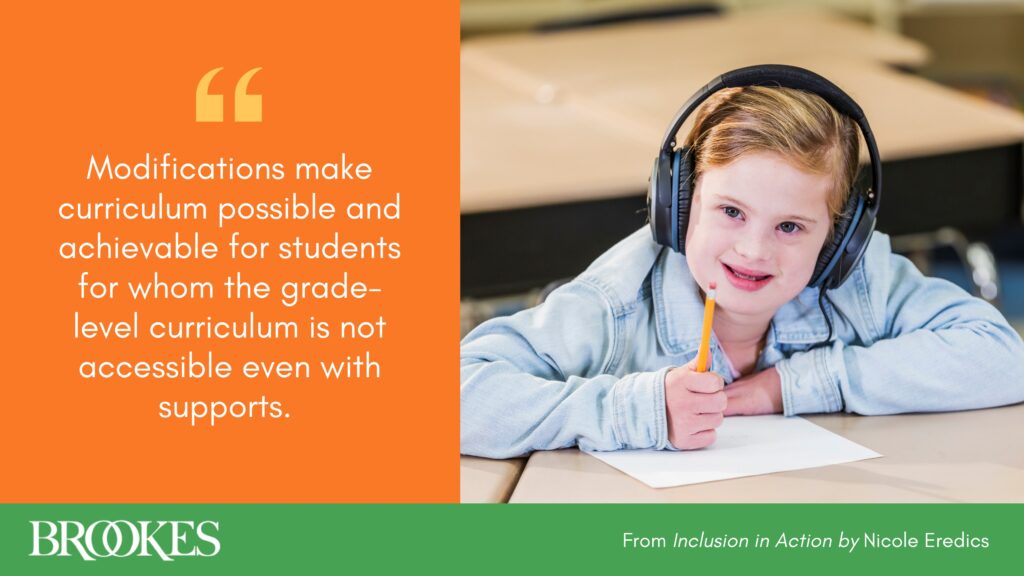 Need some new ideas for modifying your curriculum? Inclusion expert Nicole Eredics presents 40 specific strategies for curriculum modification in her practical guidebook Inclusion in Action. Plus, check out these blog posts for more expert advice:
Need some new ideas for modifying your curriculum? Inclusion expert Nicole Eredics presents 40 specific strategies for curriculum modification in her practical guidebook Inclusion in Action. Plus, check out these blog posts for more expert advice:
- 4 Types of Accommodations and Modifications to Support Student Success
- Accommodations and Modifications for 10 Common Classroom Activities
Check for understanding in creative ways.
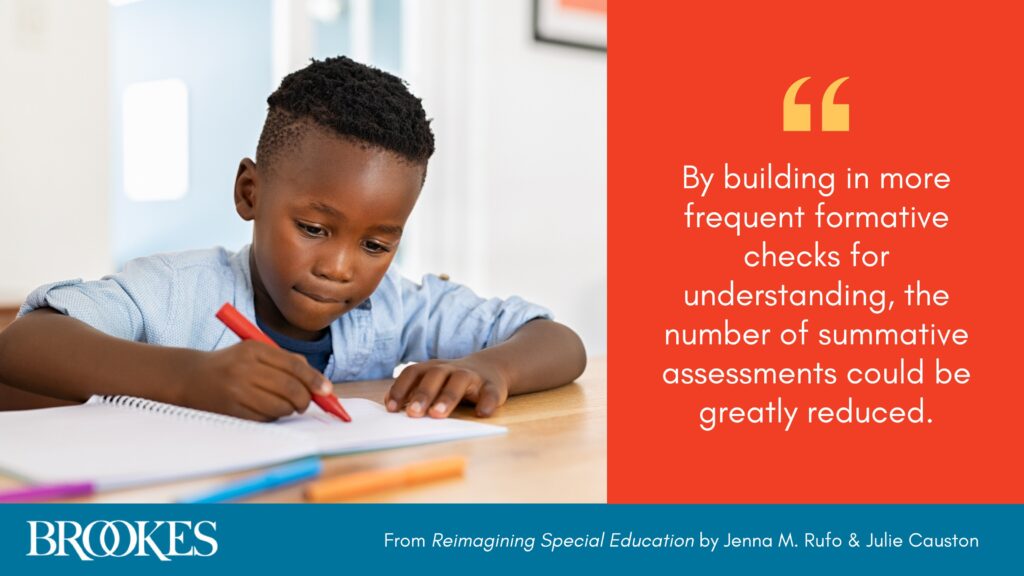 As Jenna Rufo and Julie Causton point out in their book Reimagining Special Education, frequent formative assessments can be a much more effective and inclusive way to check for student understanding than more traditional methods. Think beyond the old “thumbs up or thumbs down” approach with these 11 Engaging Ways to Assess Student Understanding.
As Jenna Rufo and Julie Causton point out in their book Reimagining Special Education, frequent formative assessments can be a much more effective and inclusive way to check for student understanding than more traditional methods. Think beyond the old “thumbs up or thumbs down” approach with these 11 Engaging Ways to Assess Student Understanding.
Tune up your IEP process.
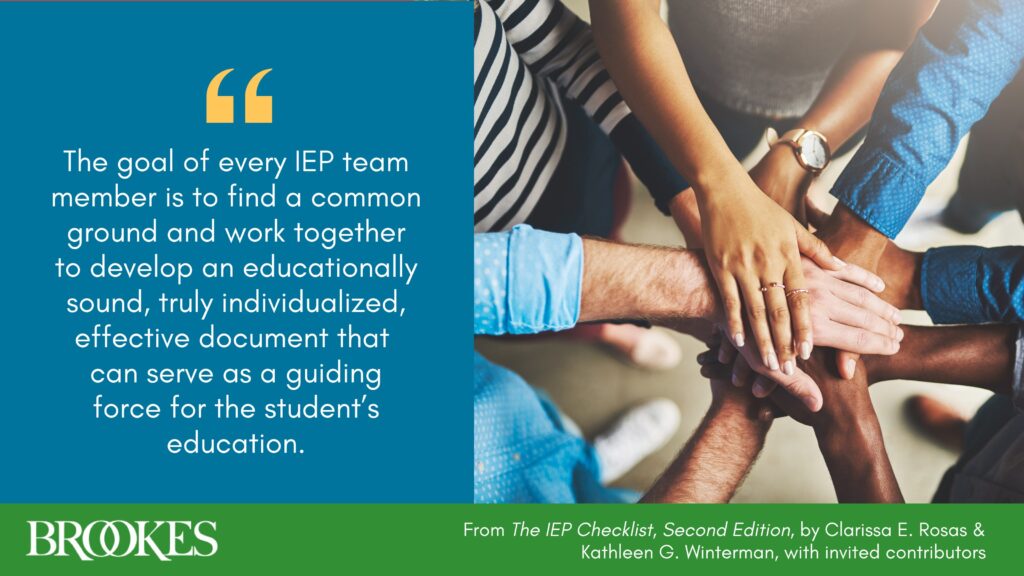 For some good practical tips for creating more effective, efficient, and meaningful IEPs, start with the blog posts below (and grab a copy of The IEP Checklist for a fantastic one-stop IEP guide!):
For some good practical tips for creating more effective, efficient, and meaningful IEPs, start with the blog posts below (and grab a copy of The IEP Checklist for a fantastic one-stop IEP guide!):
- Your IEP Timeline: Before, During, and After the Meeting
- 7 Tips for Writing Functional Goals for IFSPs and IEPs
- 11 Things to Do After an IEP Meeting
Work to address the anxiety epidemic.
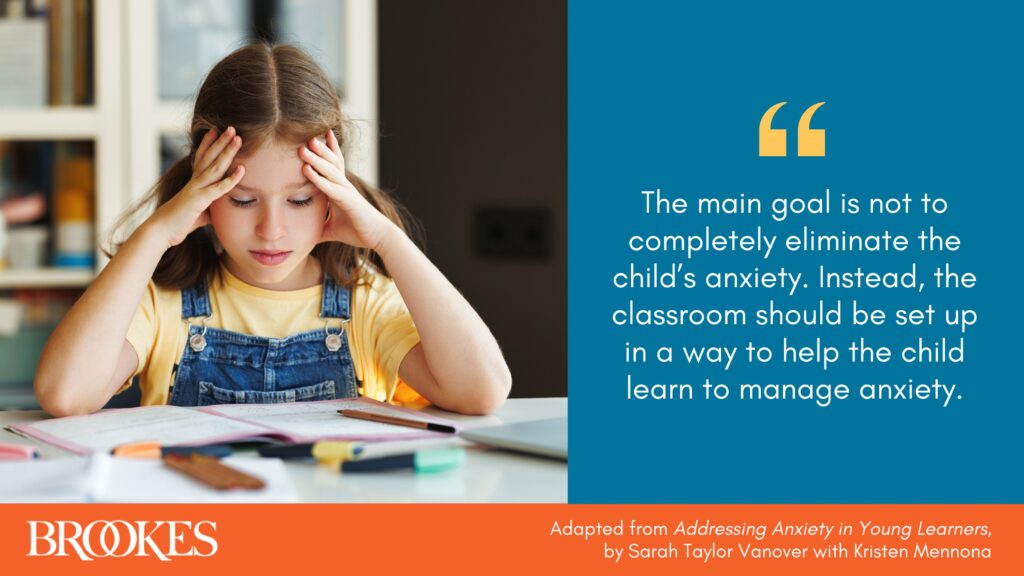 A major obstacle to learning, anxiety is skyrocketing among all children—and it’s especially a struggle for students who are on the autism spectrum or have other social/learning needs. To support students and help them manage anxiety, check out the book Addressing Anxiety in Young Learners and the new cognitive-behavioral therapy (CBT) program Facing Your Fears in Schools.
A major obstacle to learning, anxiety is skyrocketing among all children—and it’s especially a struggle for students who are on the autism spectrum or have other social/learning needs. To support students and help them manage anxiety, check out the book Addressing Anxiety in Young Learners and the new cognitive-behavioral therapy (CBT) program Facing Your Fears in Schools.
Presume and construct competence.
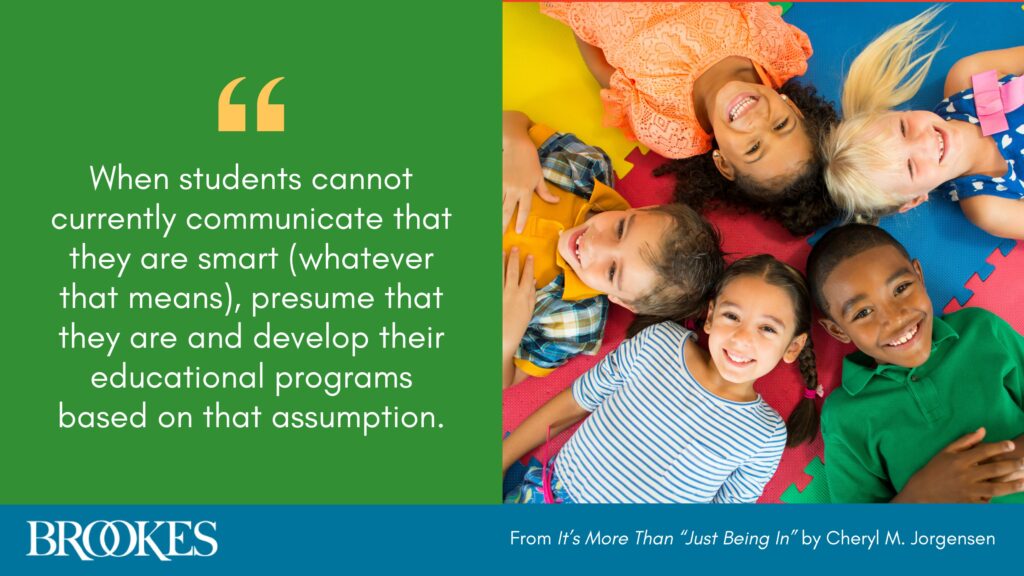 Avoid making predictions or assumptions about a student based solely on the way that student looks, moves, or communicates. Always make the least dangerous assumption—that is, presume competence—even if you feel uncertain about a student’s abilities at first. (Read this blog post on The Power of Presuming Competence.) And, as Cheryl Jorgensen says in her book It’s More Than “Just Being In”: “It is not enough to simply hold a belief. Everyone involved with the student needs to actively construct—to build—[their] competence through their words, instruction, and supports that they provide.”
Avoid making predictions or assumptions about a student based solely on the way that student looks, moves, or communicates. Always make the least dangerous assumption—that is, presume competence—even if you feel uncertain about a student’s abilities at first. (Read this blog post on The Power of Presuming Competence.) And, as Cheryl Jorgensen says in her book It’s More Than “Just Being In”: “It is not enough to simply hold a belief. Everyone involved with the student needs to actively construct—to build—[their] competence through their words, instruction, and supports that they provide.”
For deeper dives into the tips and guidelines in this post, check out the featured books from top experts. (If your school is looking for a good library of books to invest in this year, this list is a great place to start!)
- The Educator’s Handbook for Inclusive School Practices, by Julie Causton and Chelsea Tracy-Bronson
- Inclusion in Action, by Nicole Eredics
- You’re Going to Love This Kid!, Third Edition, by Paula Kluth
- Empowering Students with Hidden Disabilities, by Margo Vreeburg Izzo & LeDerick Horne
- It’s More Than “Just Being In,” by Cheryl M. Jorgensen
- The Teacher’s Guide for Effective Classroom Management, Third Edition, by Tim Knoster & Stephanie Gardner
- True Inclusion with UDL, by Patti Kelly Ralabate
- The IEP Checklist, Second Edition, by Clarissa E. Rosas & Kathleen G. Winterman, with invited contributors
- Reimagining Special Education, by Jenna M. Rufo & Julie Causton
- Addressing Anxiety in Young Learners, by Sarah Taylor Vanover with Kristen Mennona

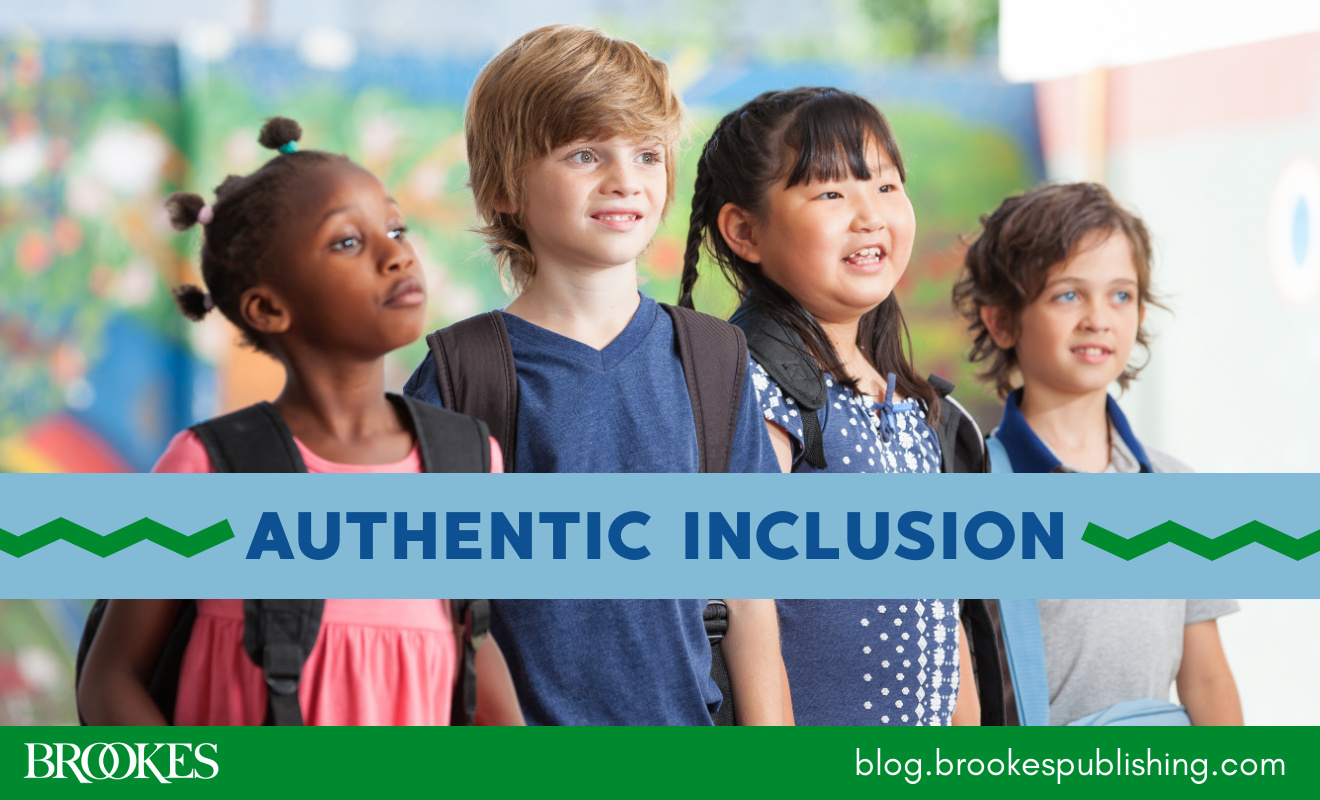
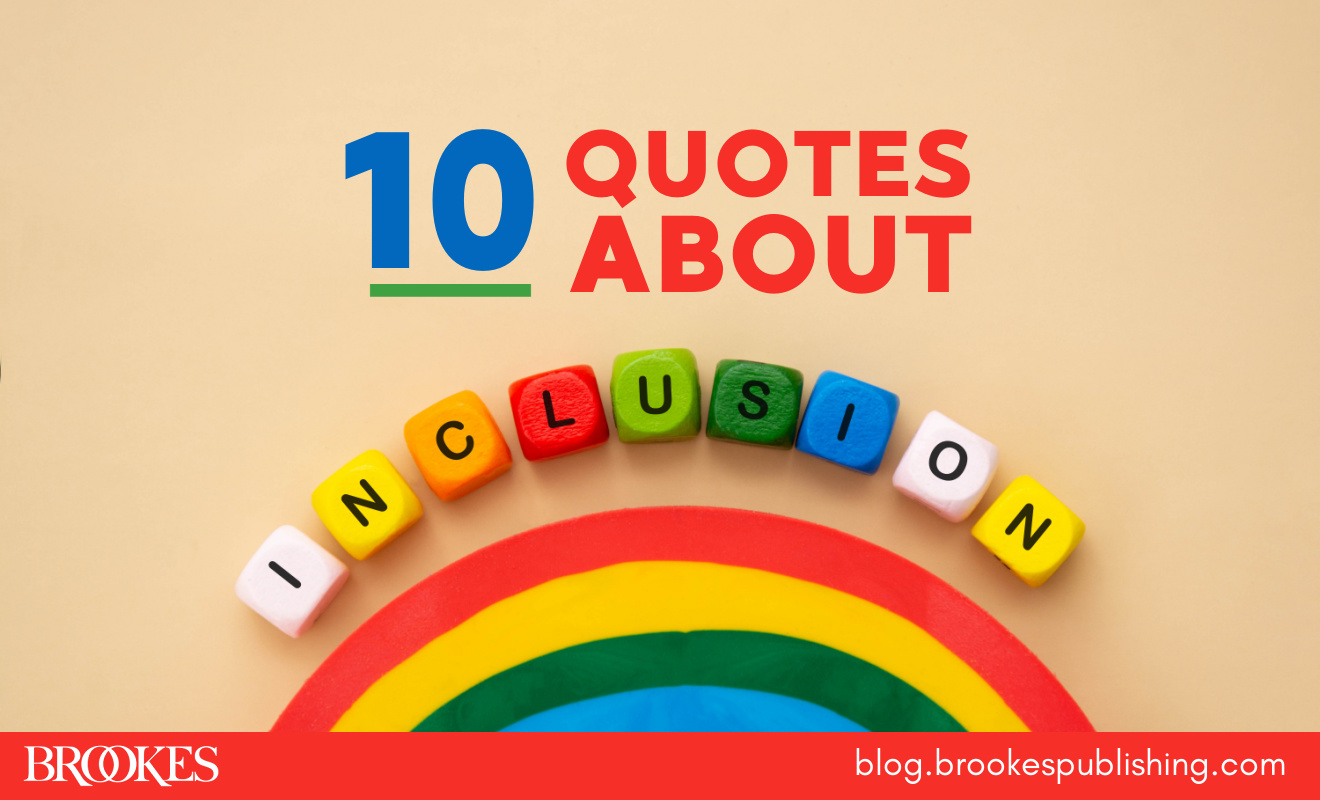
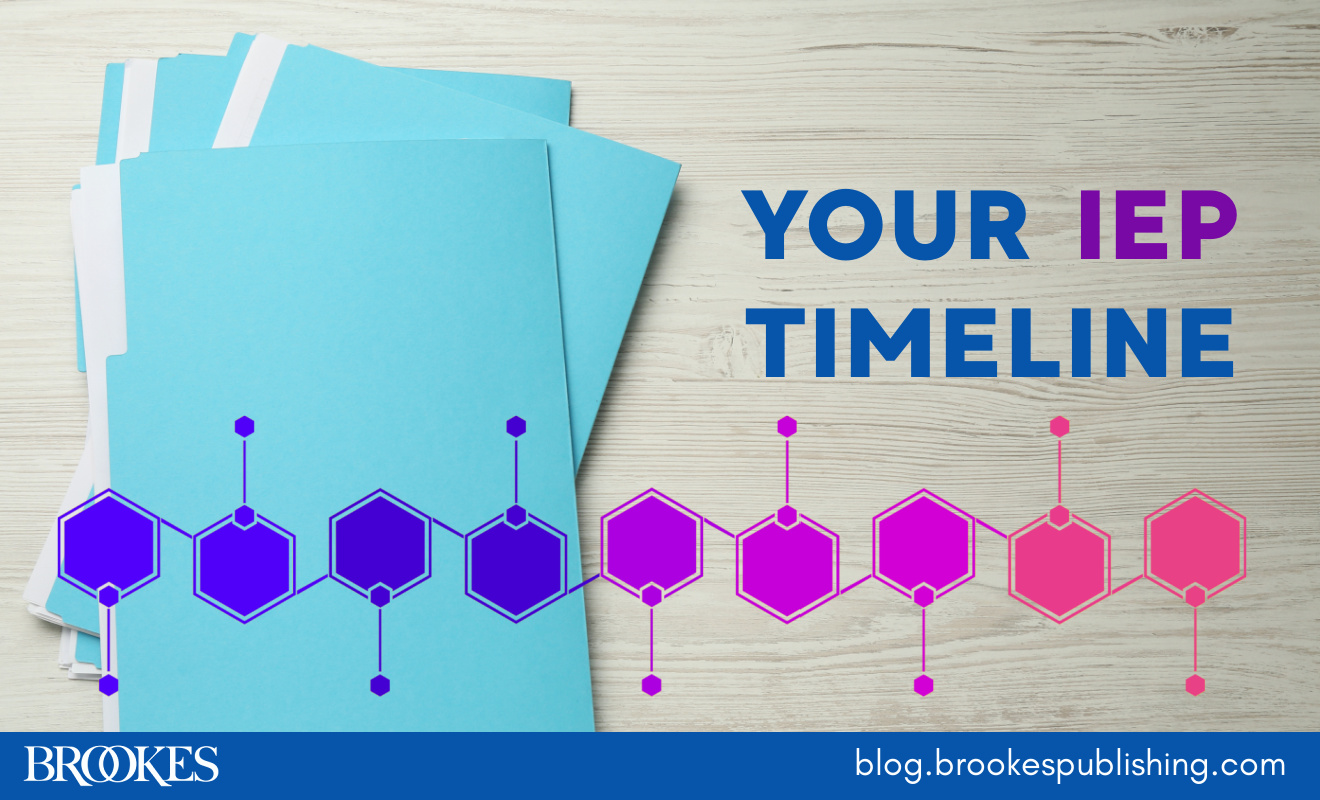
Write a Comment
Your email address will not be published. Required fields are marked *
Post a Comment